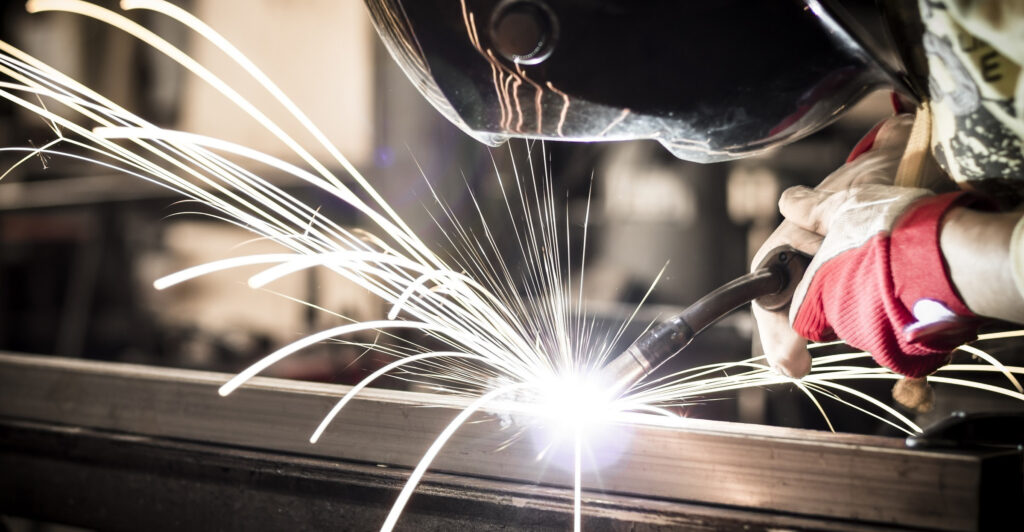- Perspective – May 2025
- Columbus Stainless Advert
- Market Intelligence – Sassda GPS
- Market Intelligence – Fair Trade or Foul Play? The Taxing Truth About Trade Tariffs
- State of the Stainless Nation
- Technical Insight – Stainless Steel and South Africa’s water crossroads
- NDE Advert
- Professional Profile : Pierre Rootman
- Technical Insight – Can mild steel survive where stainless fails?
- Millenium Metals Advert
- Member News – Cronimet
- Market Intelligence – Angola
- Fastenright Advert
- Member News – Coalition Engineering
- Member News – Scientific Engineering
- Sassda News – Western Cape Golf Day
SMARTER WELDING, STRONGER GROWTH: COALITION ENGINEERING TEAMS WITH SASSDA

As stainless steel fabrication faces rapid transformation, from stricter sustainability demands to next-generation automation, Coalition Engineering Supplies has positioned itself not merely as a supplier, but as a strategic enabler for forward-looking fabricators. Its recent decision to join Sassda is both a signal of intent and a commitment to playing a more active role in the sector’s evolution.
Director Wes Bischoff says, “Joining Sassda was a strategic decision driven by a clear vision. We want to strengthen our position within the stainless steel value chain through deeper industry collaboration, access to insights, and continuous innovation.”
Technology differentiators
As a specialist supplier serving industries from rail to HVAC, Coalition Engineering is acutely aware of the shifting pressures within these sectors. Infrastructure upgrades in rail and the push for more energy-efficient HVAC systems have created surging demand for corrosion-resistant, high-integrity welded components. It’s in these high-spec environments that the company’s expertise in precision welding solutions, including laser welding and gas-saving technology, becomes a true differentiator.
Coalition isn’t just meeting demand, it’s driving change. Beyond products, it focuses on process efficiency and sustainability. Tools like the Optimator® help cut gas use by up to 50% without sacrificing quality and partnerships with innovators like Translas, CLOOS, and GasiQ, Coalition support cleaner, more efficient welding.
Catalysts for change
For Coalition, these tools are more than just components, they’re catalysts for change. “We’re working closely with clients to help them shift from traditional fabrication methods to laser welding and cleaning. These technologies reduce rework, improve quality, and future-proof operations. The challenge isn’t the technology itself-it’s building confidence in the investment.”
Part of building that confidence lies in knowledge-sharing, which is a key reason Coalition has aligned with Sassda. “The partnership is about more than industry affiliation. It’s a two-way commitment to growing skills, sharing best practices, and unlocking opportunity across the stainless steel sector,” says Bischoff.
Growth partners
Coalition plans to take full advantage of Sassda’s technical resources, training platforms, and networking initiatives. This includes investing in upskilling its workforce to global standards and contributing thought leadership on emerging technologies and sustainable practices. “Ultimately, Sassda is more than a membership, it’s a growth partner,” says Bischoff.
Looking ahead, Bischoff sees three major trends reshaping stainless steel fabrication over the next five years:
1. Sustainability - Demand is rising for energy-efficient processes, greener equipment, and reduced material waste. Technologies like the Optimator® and low-energywelding systems are central to this shift.
2. Automation - Robotics will play a growing role, especially in high-volume or precision-focused sectors. Coalition is preparing clients with access to advanced robotic welding platforms and support to integrate them.
3. Material Specialisation - More sectors are adopting duplex and super duplex stainless steels. Coalition is responding by ensuring its offerings match the requirements of increasingly demanding applications.
“Our goal is to not just support the current needs of South African fabricators-but to prepare them for what’s next,” Bischoff affirms.

